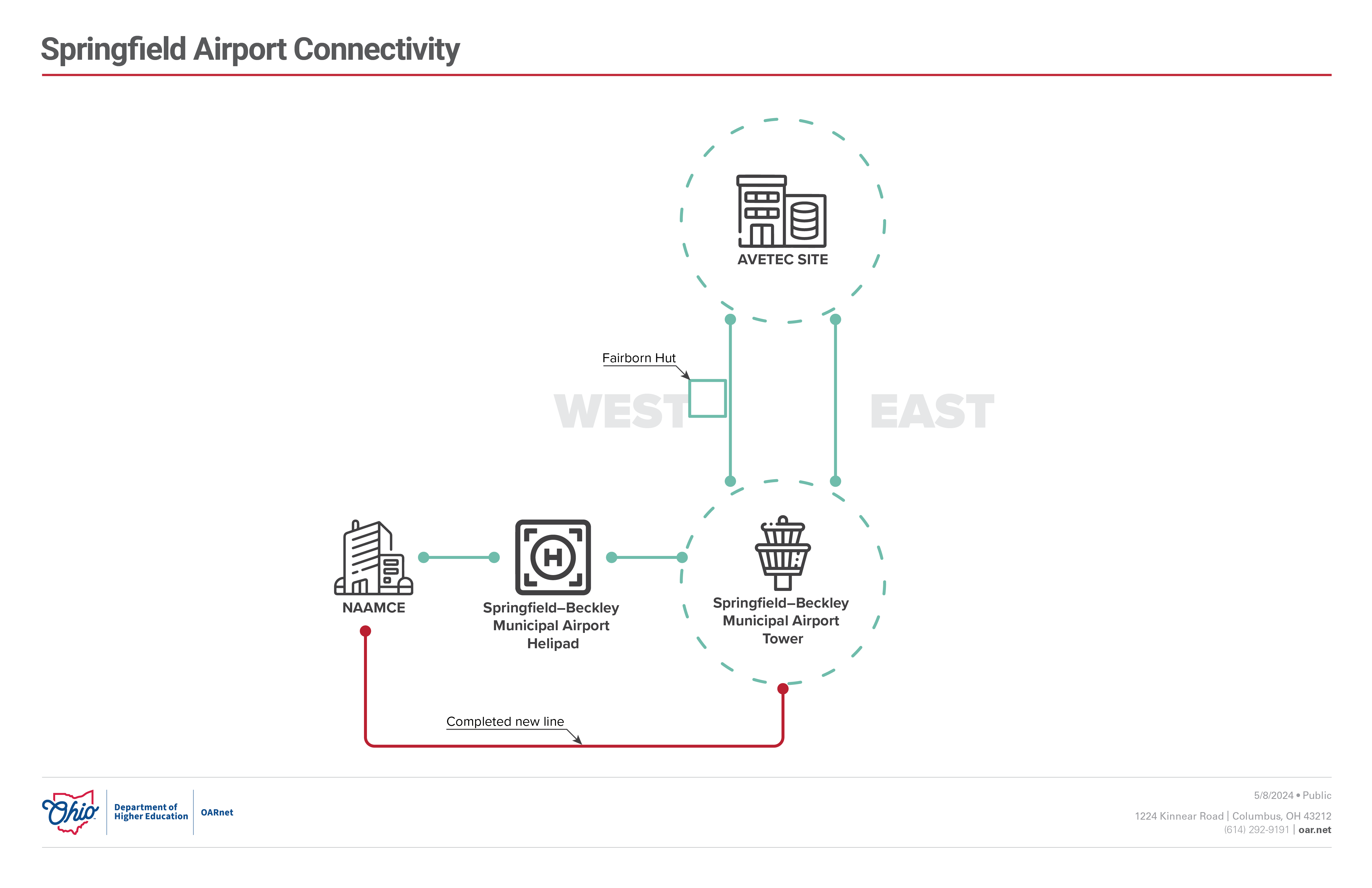A decade ago, OARnet extended its fiber-optic backbone to Springfield, Ohio, which created capacity for drone testing and data collection at the Ohio Department of Transportation (ODOT)’s Uncrewed Aircraft Systems (UAS) Center at the Springfield-Beckley Municipal Airport. The project has helped pave the way for developments in uncrewed flight and transportation technology innovations, through state initiatives such as FlyOhio, DriveOhio and the new National Advanced Air Mobility Center of Excellence (NAAMCE).
NAAMCE, which celebrated its grand opening in fall 2023, will allow public and private partners to advance technologies such as electric vertical take-off and landing vehicles (eVTOLs). The 55,000 square-foot building houses administrative, research and collaboration space, including hangar space for the Air Force and private industry advanced air mobility aircraft. Funded by $9 million in investments from the U.S. Department of Defense, JobsOhio and the city of Springfield, NAAMCE is expected to support the creation of up to 2,000 jobs.

“NAAMCE advances the state’s efforts to attract aerospace original equipment manufacturers (OEMs) and suppliers serving the advanced air mobility industry,” said Tom Franzen, assistant city manager and director of economic development for the city of Springfield. “The benefits include new jobs and new investment, academic research and student opportunities, strengthening the state’s aerospace sector and supporting our military installation missions at Wright-Patterson Air Force Base and the Springfield Air National Guard Base.”
ODOT’s UAS Center approached OARnet in 2022 about expanding the fiber-optic backbone to the new center and providing redundancy for resiliency. (See accompanying diagram that shows connectivity.) OARnet worked with various entities, including the city of Springfield, the airport and AltaFiber, the company that manages the fiber connection at the location, to extend connectivity to the NAAMCE facility.

“The fiber infrastructure that the state of Ohio has invested in enables high-speed internet service, which reduces deployment time and can support high-tech solutions that are tested and deployed at Springfield-Beckley airport,” said Richard Fox, director of the Ohio UAS Center, which is part of ODOT’s DriveOhio initiative.
The UAS Center is one of only a few facilities that allow for beyond visual line of sight (BVLOS) testing of uncrewed aerial vehicles to collect infrastructure data, which can then be processed and disseminated to ODOT and other state agencies, as well as research data for private and public entities and the military. The center relies on high-speed internet access to support and control flight testing and remote operation of small uncrewed aircraft systems across the state.

“The direct impact of OARnet is the ability to support emerging technology with low latency and a high-speed data transfer that will accommodate the interoperability of sensors needed for new infrastructure deployment,” Fox said. “As we move towards virtual and remotely operated environments, OARnet will support the development of this new ‘digital domain’ with their extensive fiber network capabilities.”
“The extension of the fiber-optic backbone into Springfield over the last decade has made significant positive impacts on the various communities OARnet serves in this region,” said Pankaj Shah, OARnet executive director. “Higher education and government institutions in the Springfield area have used the enhanced connectivity and resiliency to advance their research initiatives, including through collaborations with private industry. “These activities have promoted economic development in Ohio.”
By Andrea Gibson
Since 1987, OARnet has delivered technology-based solutions that reduce costs, increase productivity and improve customer service. As a division of the Ohio Department of Higher Education's Ohio Technology Consortium (OH-TECH), OARnet serves Ohio's education, health care, public broadcasting and government communities. Other members of the consortium include the Ohio Supercomputer Center (OSC) and the Ohio Library and Information Network (OhioLINK).